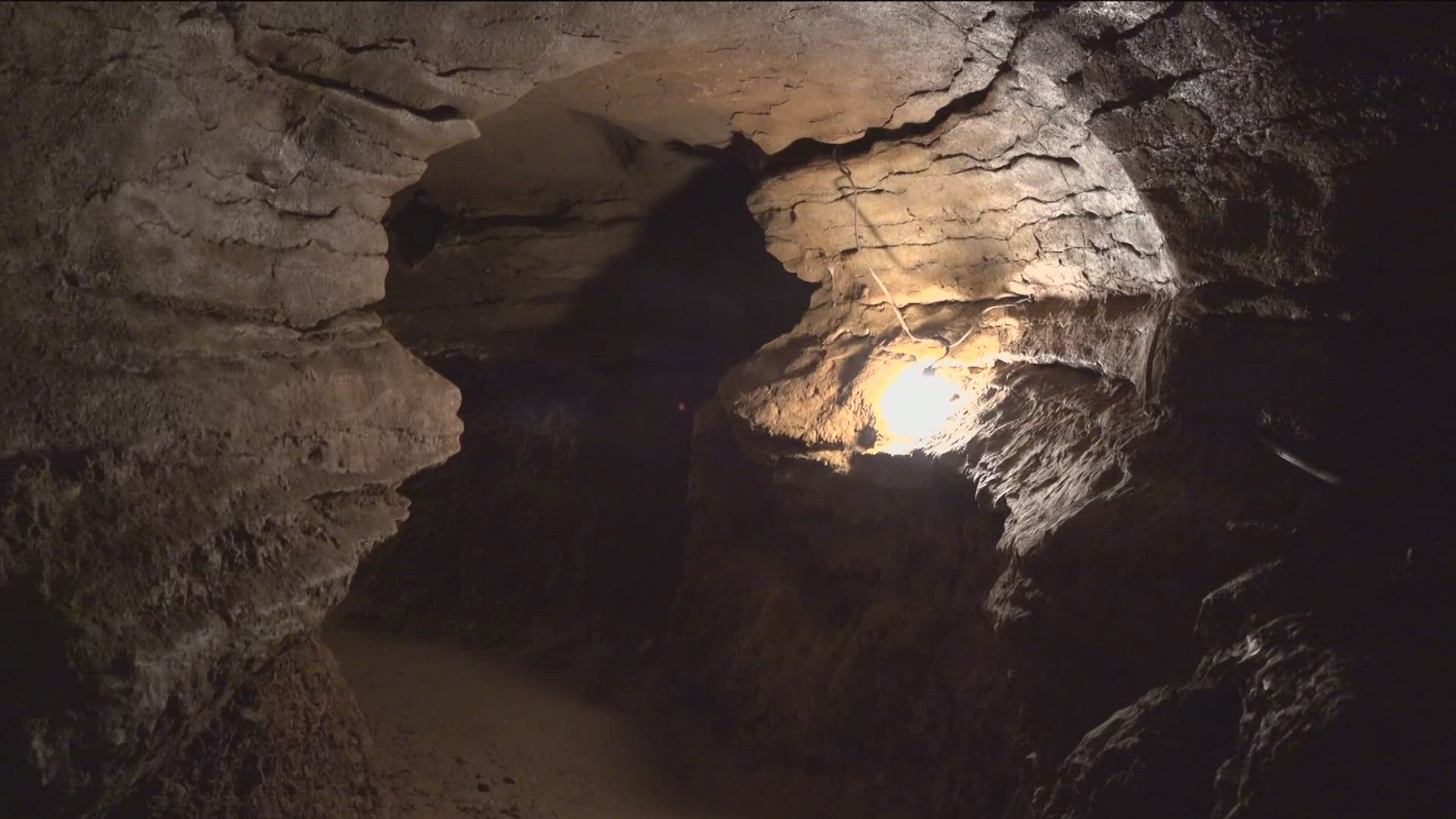SULPHUR SPRINGS, Ark. — Owners of an iconic landmark cave near the Benton County Stone Quarry are concerned blasts could interrupt their cave's ecosystem.
The Old Spanish Treasure Cave is located in Sulphur Springs near Gravette. Paul Linscott bought the cave in 1996 and has attracted tourists with the legend of hidden treasures buried by Spanish conquistadors.
"I love caves. I've always been involved in caves since I was very, very young," Linscott said. "We've been able to reestablish it. This is a very historical cavern because there's a lot of really cool history that's involved with this."
With much of the cave system unexplored and only some shown to the public, Linscott tries to coexist with the ecosystem. Yet, less than a mile north of his property, Linscott said blasts from Benton County Stone could affect that relationship.
"They're blasting closer and closer to us. Either that or the vibration from their blasting is getting more intense here, and we need to stop that so the integrity of the cavern is not structurally damaged," Linscott said.
Linscott is also concerned about the endangered bats living in the cave. Studies have shown that 90% percent of some species in North America have been killed by white-nose Syndrome, including some found in the cave. Linscott conducts bio-surveys to review the bat population and the ecosystem that lives in the caves.
"Over the last 30 years, we have been able to witness the Arkansas long-eared bats, Ozark long-eared bats, the Indiana big brown bats, the tri-colored bats, and even the gray bats have been in here," Linscott said. "Now, we're reduced just to a few of the tri-colored bats that we've been able to identify. And when I'm talking about a few, we're talking about just a handful."
Linscott said the blasts could affect the bats as they try to go into deep hibernation and, in turn, affect the ecosystem that relies on the bats.
"We don't want to necessarily stop the quarry because we know limestone gravel roads and stuff like that have to be built, but some of the methods, and maybe where they blast and where they take the gravel from can be changed."
After dealing with the quarry issue for nearly 30 years, the cave owner explained that he'd brought the issue to the public because it continued to grow despite any solutions promised.
Linscott said since a state cave and mine inspector retired, he has had to work with the Department of Labor on his complaints. He's currently working with them to investigate state and federal regulations, though he questions if they apply to the region's Karst topography.
"We're hoping to be able to get this resolved, you know, and in a good way that both the quarry and us can, can be in harmony, because man has to be in harmony with nature, you know. And if you overlook that, then it's, it's, doesn't turn out good for anybody," Linscott said.
5NEWS made requests for an interview with Kemp Quarries, the owner of Benton County Stone. An attorney representing Benton County Stone sent the following statement:
"Benton County Stone has been in operation at its Gravette location for over 32 years, providing, among other items, necessary vital construction materials for roadways and highways. Benton County Stone provides jobs to approximately 55 people through its Gravette location alone. Benton County Stone has always strived to meet and exceed all regulations set forth by both federal and state agencies. Benton County Stone takes every step possible to minimize the impact of quarrying activity on surrounding communities and landowners."
"As standard procedure, seismographs are placed between the mine and the closest dwelling or structure. These seismographs are monitored by an independent third party and every shot/blast is recorded to ensure that it was within the limits set forth by federal and state agencies. This seismic technology is implemented to verify the force of all blasts performed on-site. Quarry blasting schedules are also communicated to neighboring landowners to minimize any disruption to the landowners."
Watch 5NEWS on YouTube.
Download the 5NEWS app on your smartphone:
Stream 5NEWS 24/7 on the 5+ app: How to watch the 5+ app on your streaming device
To report a typo or grammatical error, please email KFSMDigitalTeam@tegna.com and detail which story you're referring to.

